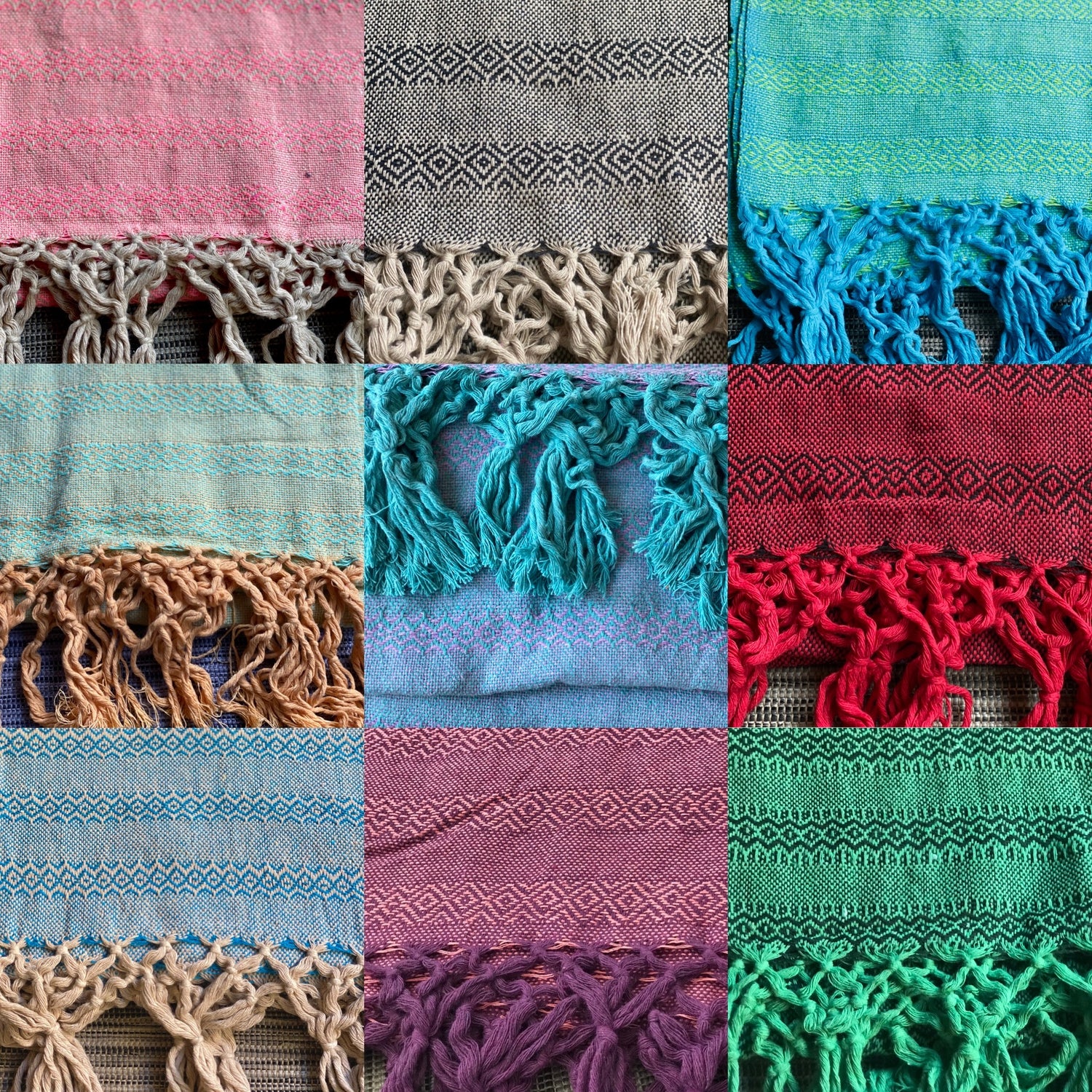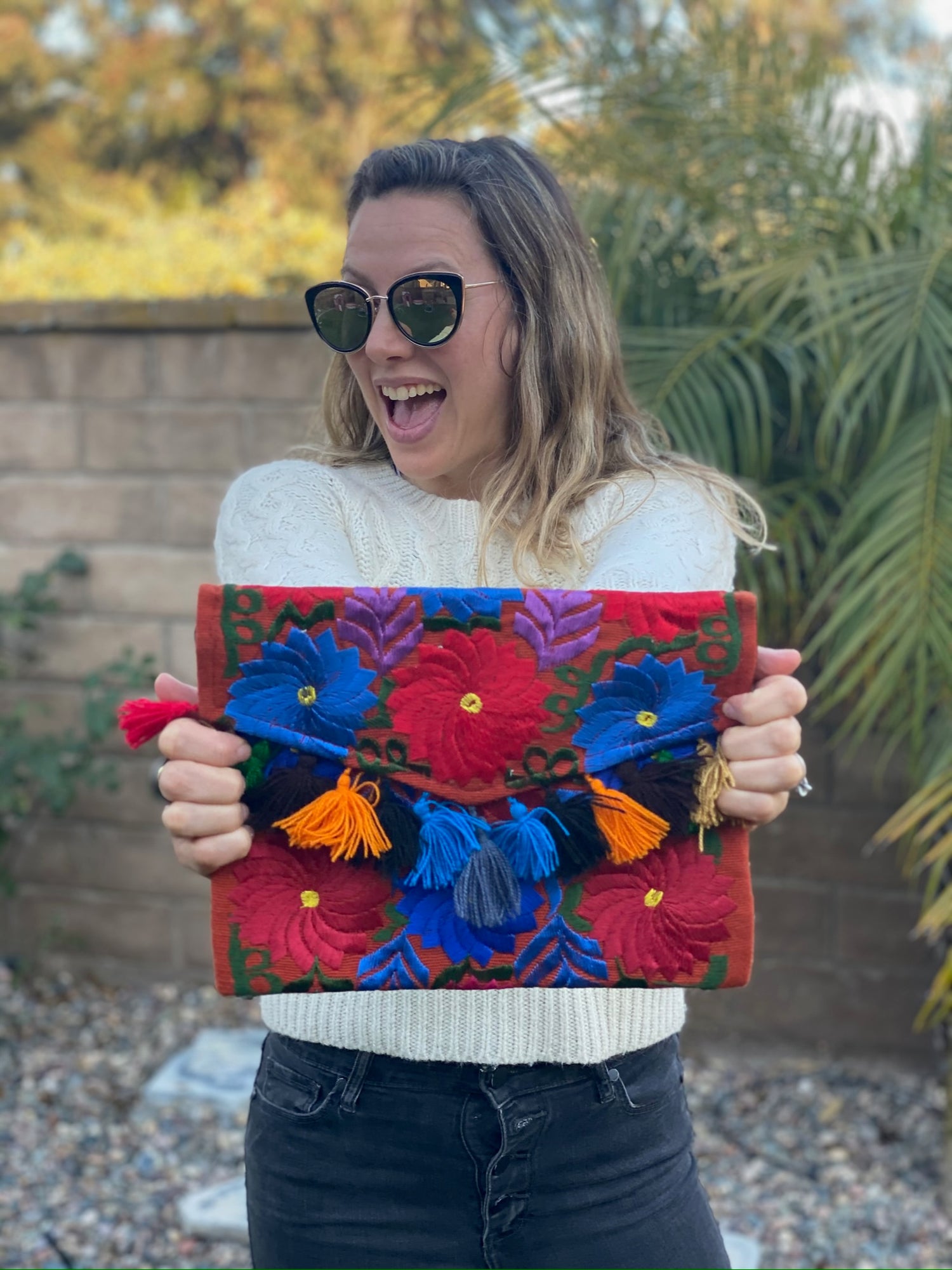Rebozos are more than just beautiful shawls in Mexican culture; they play a vital role in dance and performance art.
These traditional textiles enhance movement and storytelling, adding depth to cultural expressions.
As you explore the use of rebozos in various performances, you'll discover how they embody tradition while showcasing artistic creativity.

In many dance forms, the rebozo serves both a functional and symbolic purpose. Dancers skillfully manipulate the fabric, using it to convey emotions and connect with the audience.
This dynamic interaction brings a unique flair to the performance, showcasing the vibrant spirit of Mexican culture.
Understanding the craftsmanship behind rebozos adds another layer of appreciation. Each piece reflects the artisan's skill and dedication, linking the past with present performances.
The rebozo, therefore, is not merely a costume accessory but a crucial element that enriches the narrative in dance and performance art.
Key Takeaways
- Rebozos enhance movement and storytelling in Mexican dance.
- They serve both functional and symbolic roles in performances.
- The craftsmanship reflects cultural heritage and artistic skill.
Historical and Cultural Significance of the Rebozo

The rebozo is a traditional Mexican shawl that holds deep historical and cultural importance. Its origins trace back to indigenous weaving traditions, and it continues to be a powerful symbol of identity and heritage in Mexican culture.
Origins and Evolution of the Rebozo
The rebozo's roots are found in pre-Hispanic Mexico, where it was used by indigenous women for various purposes. Initially created from cotton or wool, the shawl evolved in design and fabric over the centuries.
Today, you can find rebozos made from silk and featuring intricate patterns.
The evolution of the rebozo is closely tied to the history of Mexico’s textile industry. Each region has its own unique styles and techniques, reflecting local traditions. This shawl has adapted to changing fashions while remaining a link to ancestral knowledge and cultural identity.
Rebozo in the Social and Cultural Fabric
You will notice that the rebozo plays a significant role in Mexican society, transcending social classes. For many Mexican women, it represents femininity, strength, and cultural heritage.
It is often worn during important life events, from weddings to religious ceremonies.
The rebozo also acts as a tool for storytelling, carrying unique motifs and symbols that reflect personal and regional histories. These designs are passed down through generations, showcasing the significance of cultural tradition among indigenous women.
Artistic Representations and Iconography
The rebozo has captured the imagination of many artists, including Frida Kahlo and Diego Rivera. They used it as a powerful visual language in their works, reflecting Mexican heritage and traditions.
In art, the rebozo symbolizes not only cultural identity but also the complex roles women have played in Mexican history. Its motifs often include floral patterns and symbols drawn from nature, enhancing its significance as more than just a textile. You can see how it embodies the narratives of resilience and femininity within Mexican culture.
The Craftsmanship of Rebozos

Creating a rebozo involves intricate techniques and a deep appreciation for textile traditions. Each piece reflects the skill of artisans and is a blend of history, culture, and artistry. You will find significant variations influenced by regional practices and contemporary designs.
Weaving Techniques and Materials
Rebozos are made using specific weaving techniques that highlight local traditions. The backstrap loom is a common tool among artisans in regions like Oaxaca and Michoacán.
This method allows for control over the tension and design, creating unique patterns.
Materials used in weaving can include cotton, silk, and wool. Cotton rebozos are popular for their durability and comfort. Natural dyes, such as cochineal, give these fabrics rich colors without chemical additives.
Artisans often source materials from local suppliers, emphasizing the importance of sustainable practices.
Rebozo Making: A Labor of Love
Making a rebozo is a labor-intensive process that requires dedication. Artisans spend hours, sometimes weeks, to create just one piece. Each stage, from spinning the yarn to weaving, is done with care.
Workshops and cooperatives often showcase the skills of local artisans. This collaboration helps preserve traditional techniques and provides fair wages.
You will find that these makers infuse their love and cultural heritage into every stitch, creating pieces that carry stories and significance.
Regional Variations and Contemporary Designs
Rebozos vary widely across regions, influenced by local materials and patterns. In Tenancingo, for example, artisans might use intricate punta techniques, while Chiapas might showcase bolder, brighter colors.
Today, contemporary design has brought rebozos into fashion. They are embraced by fashion houses and designers who blend traditional craftsmanship with modern aesthetics.
You can find rebozos that honor heritage yet appeal to contemporary tastes. The appreciation for these textiles continues to grow, making them a symbol of both cultural pride and fashion innovation.
Frequently Asked Questions

In this section, you will find answers to common questions about the use of rebozos in Mexican dance and performance art. The topics cover the incorporation, cultural significance, historical origins, weaving techniques, and representation of rebozos in artistic expressions.
How is the rebozo incorporated into Mexican dance and performance?
The rebozo is often used as a prop or accessory in traditional Mexican dances. Dancers manipulate the fabric in intricate ways, adding flair and rhythm to their movements.
Its flowing design enhances the visual appeal of performances.
What cultural significance does the rebozo hold in Mexico?
The rebozo symbolizes femininity, tradition, and cultural identity in Mexico. It is often associated with women's roles in society and reflects the country's rich history.
Wearing a rebozo can denote respect for heritage and community values.
Can you trace the historical origins and evolution of the rebozo?
The origins of the rebozo date back to pre-Hispanic times when it served practical purposes. Over centuries, it evolved in style and function, particularly during the colonial period.
Its designs and uses varied across regions, influenced by local customs and materials.
What are the traditional techniques used in rebozo weaving?
Rebozos are traditionally made using techniques such as backstrap weaving and loom weaving. Artisans often incorporate vibrant colors and patterns, reflecting regional styles.
These techniques require skill and knowledge passed down through generations.
In what ways does a rebozo represent Mexican identity in artistic expressions?
The rebozo is more than a garment; it is a representation of Mexican culture and identity. Through art, dance, and festivals, it showcases the country's diversity.
The rebozo helps convey stories, emotions, and traditions that are vital to Mexican heritage.
How do performers integrate rebozos into their attire and movement in traditional Mexican dances?
Performers often wear rebozos draped over their shoulders or tied around their waists. The movements of the dance complement the flow of the fabric. This integration highlights the connection between the dancer and the cultural narrative they present.




